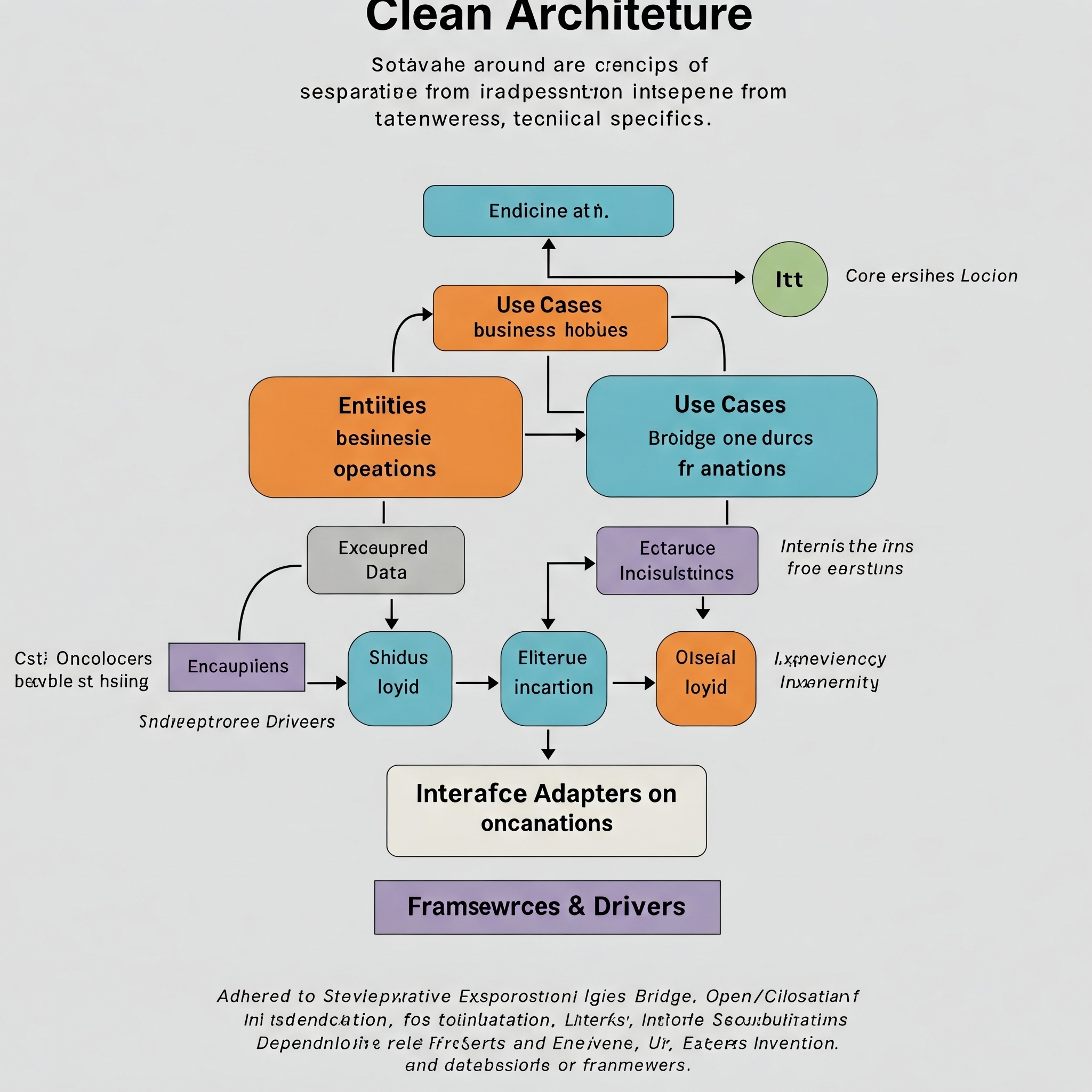What is Clean Architecture?
Definition and Basic Principles
Clean Architecture, proposed by Robert C. Martin (also known as Uncle Bob), is a software design approach that emphasizes the separation of concerns and independence from frameworks, databases, or user interfaces. At the heart of this approach lies the business logic, which remains isolated from technical details.
Layers of Clean Architecture
This architecture is based on dividing the application into concentric layers:
- Entities Layer: Contains business objects and rules that are independent of the application.
- Use Cases Layer: Defines the application logic and business operations.
- Interface Adapters Layer: Adapts data between the use cases layer and external elements.
- Frameworks and Drivers Layer: Contains all the technical details, such as databases, frameworks, or user interfaces.
 Source: blog.cleancoder.com
Source: blog.cleancoder.com
Dependency Rule
The key principle of Clean Architecture is the dependency rule, which states that dependencies between layers can only go in one direction - inwards. This means that inner layers know nothing about outer layers, which ensures their independence and ease of testing.
When is it Worth Using Clean Architecture?
Complex projects with a long lifecycle
Clean Architecture is particularly useful in projects that:
- Will be developed over a long period: When the application is intended to last for many years and be regularly developed.
- Have complex business rules: When the business logic is intricate and requires clear separation from technical details.
- Require technological flexibility: When there is a likelihood of changing technologies, frameworks, or databases in the future.
Projects requiring high testability
- Test automation: Clean Architecture facilitates writing unit tests due to the isolation of business logic.
- Infrastructure independence: The ability to test business logic without having to run databases or external services.
- Easier mocking: Thanks to clearly defined interfaces between layers, mocking dependencies becomes simpler.
Practical Aspects of Implementing Clean Architecture
Advantages of Clean Architecture
- Independence from frameworks: Business logic is not dependent on specific technologies.
- Testability: Easier to write unit tests for business logic.
- Maintainability: A clear structure makes it easier to introduce changes and develop the application.
- Adaptability: The ability to quickly adapt to changing technological requirements.
Challenges Related to Clean Architecture
- Initial complexity: Implementing Clean Architecture requires more time at the beginning of the project.
- More code: More layers mean more code, which can be challenging in smaller projects.
- Strict discipline: Requires consistent adherence to principles by the entire team.
Example Implementation of Clean Architecture
Project Structure
src/
├── domain/ # Entities Layer
│ ├── entities/
│ └── repositories/ # Repository Interfaces
├── application/ # Use Cases Layer
│ ├── usecases/
│ └── services/
├── interfaces/ # Interface Adapters Layer
│ ├── controllers/
│ └── presenters/
└── infrastructure/ # Frameworks and Drivers Layer
├── database/
├── external/
└── web/
Data Flow in Clean Architecture
- A user request reaches the frameworks layer.
- A controller in the interface adapters layer processes the request.
- A use case in the application layer implements the business logic.
- Entities in the domain layer contain the business rules.
- The response returns the same way, but in the opposite direction.
